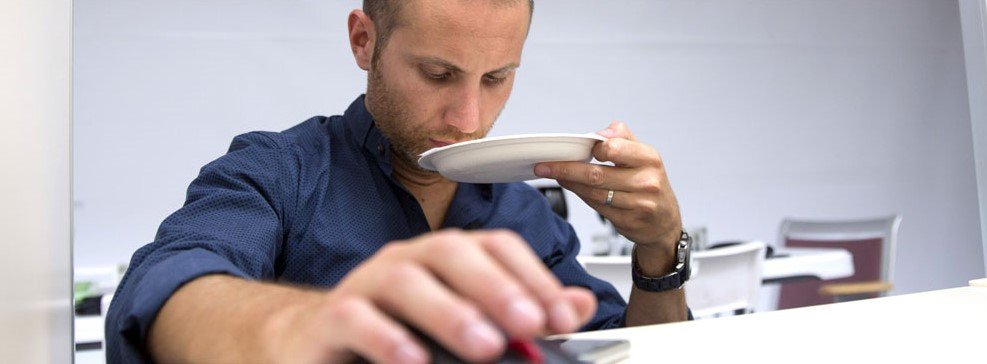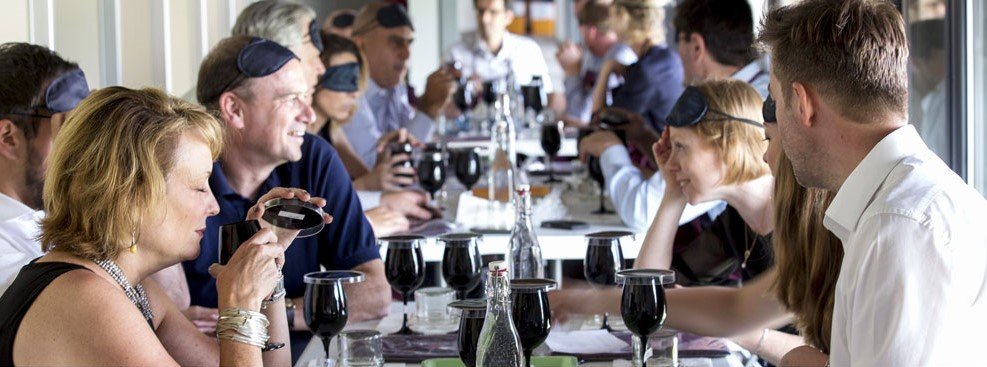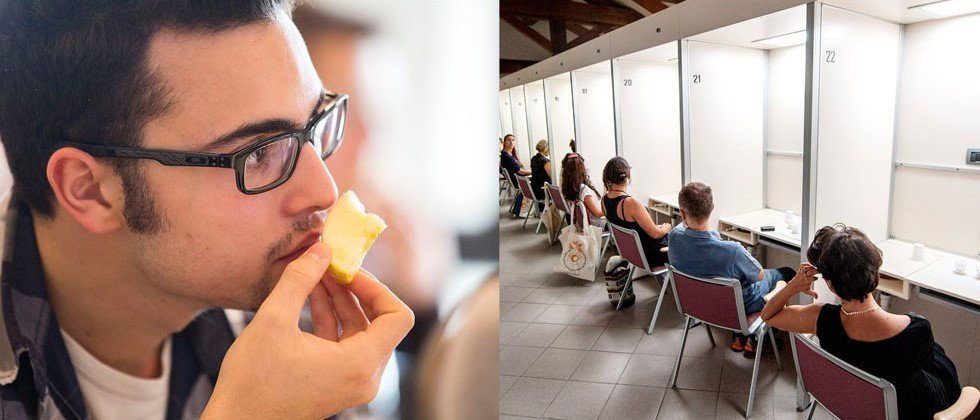Sensory, Behaviour and Cognition (SBC) Lab
The Sensory, Behaviour and Cognition (SBC) Lab is dedicated to Training, Research and Third Mission activities.
Training

The structure hosts the practical exercises provided for in the Sensory Analysis and Consumer Science courses dedicated to all students enrolled in the university’s three-year, master’s and master’s degree courses. During the practical activities, students learn the main sensory analysis techniques applied to food and beverages, to compare and evaluate the food quality and their modifications during storage. Furthermore, the Laboratory is frequently used by students for thesis projects that envisage a part related to the study of sensory perception. Furthermore, students frequently participate on a voluntary basis in the various research projects in which the Laboratory staff is engaged.
Research

The Laboratory develops research projects both independently and in collaboration with other Italian and international universities and research institutions. The research topics addressed by the Laboratory fall within those included in the interdisciplinary research areas of the University defined as “Perception and Quality” and “Environment” and mainly concern:
- the study of behavior and eating habits;
- the analysis of the effect of individual variability (understood as inter-individual difference) on the perceptual and hedonic-emotional response to food;
- the assessment of the consumer’s response to innovative food products and novel foods with significant health and / or sustainability characteristics, often obtained from virtuous circular economy practices.
Due to its intrinsic complexity, the study of eating behaviors involves the investigation of many variables that require an interdisciplinary approach. In fact, in sensory experiments, different methods are frequently combined that include the tasting of food products / model foods / aqueous solutions / olfactory standards, the collection of data relating to the characterization of tasters (e.g. through the compilation of questionnaires on socio-demographic variables, on eating habits and habits, on personality traits, etc.), implicit methods deriving from psychology and marketing, as well as genetic tests to evaluate the effect of genetic variants associated with taste and smell receptors on food preferences.
The research projects funded by competitive calls that involved the staff of the Laboratory on issues related to consumer perception in relation to sustainability and the circular economy are:
- FISH – Fertilized Hydrolyzed Soil and Habitat
- PRIME – Innovative Green Chemistry Processes and Products
- SHEEP-UP – Venetian Ovine Biodiversity: an economic opportunity for Breeders and the Territory
- VALORITIS – Enhancement of the by-products of the wine industry for the production of compounds with high added value
- VALORVITIS 2.0 – Research and innovation meet the market
Third Mission – Research and consultancy on contract for third parties

The laboratory is also available to companies wishing to study the sensory properties of their products or the affective response of consumers towards their products with scientific approaches, obtaining important elements of judgment and comparison about the quality of the same, with the release of a report of analysis.
Sensory analysis tests allow to study the quality of a food product or gastronomic preparation. Through the application of “discriminative”, “descriptive” and “similarity” sensory methods, it is possible, for example, to understand whether there are significant differences between similar products, what intensity the differences are and which sensorial attributes may possibly be related to.
With the “affective” tests it is possible to investigate the liking, the preference, the availability of purchase, and more generally, the perception of the products by consumers. It is therefore possible to obtain information that represents a valid support in the development of new foods and in marketing strategies.
The main lines of action concern:
- the definition of the sensory profile of a typical product or an industrial food;
- the assessment of the influence of ingredients, process variables and packaging on the sensory properties of the finished product;
- the verification of the sensory conformity of a product with the company standard or with the specifications of the production specification;
- the comparison between an innovative product and a traditional one;
- the comparison of the sensory characteristics of one’s own product with those of competing products on the market;
- identification of the sensory shelf-life of the products, that is the period of time in which the foods show an undetectable modification of the sensory properties;
- the identification of consumer preference drivers.
Structure

The laboratory consists of 24 booths for individual assessments and a kitchen equipped for the preparation and storage of the food to be tested. The booths are equipped with a computerized data collection system and lights (white and colored) to allow the evaluation of products in conditions of masked appearance.
By its nature, the laboratory is structured in such a way as to allow the study of the perception of food and beverage in a controlled environment, which allows to modulate variables that influence sensory perception, such as the conditions of food administration (quantity, serving temperature , order of presentation, etc.), the tasting methods, the main environmental conditions (such as lighting and the presence of noise, the presence of other people, etc.).
Contacts
Professor Luisa Torri, Director
Doctor Maria Piochi, Vice Director
Doctor Chiara Nervo, Technician

